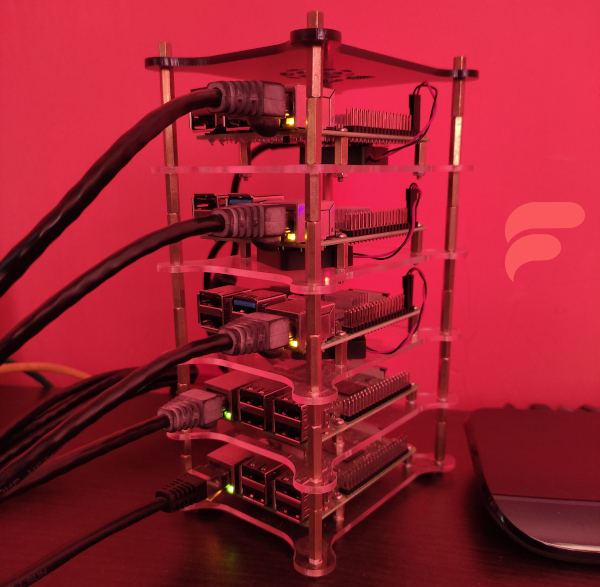K3s Notes - Part 3
In Parte 2 of K3s, a description of various concepts that are handled in Kubernetes was made, the kubectl client was installed and connectivity tests to the Kubernetes API were done.

Now we will execute basic tasks in our small cluster, but before we continue describing more details of Kubernetes.
Kubernetes objects
- Pod: It is a group of one or more containers (such as Docker containers), with shared storage/network, and some specifications of how to run the containers.
- Service: An abstract way to expose an application running on a set of Pods as a network service.
- Volume: It has a functionality similar to that of Docker Volume, where data persistence is searched after restarting one container.
- Namespace: It allows us to isolate resources for the use of the different users of the cluster.
- Manifest: It is a yaml manifest file that contains instructions that specify how to deploy an application to the node or nodes in a Kubernetes cluster.
Kubernetes Drivers
Kubernetes contains top-level abstractions called Controllers. The Controllers are based on the basic objects and provide additional functionality on top of them.
- Replicaset: The purpose of a ReplicaSet is to keep a stable set of replicas of Pods running at all times. Thus, it is used numerous times to ensure the availability of a specific number of identical Pods.
- Deployment: A Deployment controller provides declarative updates for Pods and ReplicaSets. When you describe the desired state on a Deployment object, the Deployment controller takes care of changing the current state to the desired state in a controlled way. You can define Deployments to create new ReplicaSets, or remove existing Deployments and adopt all their resources with new Deployments.
- StatefulSet: A StatefulSet is the workload API object used to manage stateful applications.
- DaemonSet: A DaemonSet ensures that all (or some) of the nodes run a copy of a Pod. As more nodes are added to the cluster, new Pods are added to them. As nodes are removed from the cluster, those Pods are destroyed. Deleting a DaemonSet clears all the Pods that have been created.
- Job: A Job creates one or more Pods and ensures that a specific number of them finish successfully. As pods complete successfully, the Job tracks successful executions. When a specified number of successful executions is reached, the task (that is, the Job) is completed. Deleting a Job removes the Pods you have created.
Commands Kubernetes
Some common commands:
1# List the available namespaces
2$ kubectl get ns
3# List Pods available in a Namespace
4$ kubectl -n kube-system get pods
5# List Pods available in a Namespace with more details
6$ kubectl -n kube-system get pods -o wide
7# Delete a pod
8$ kubectl -n kube-system delete pod NAME_RUN_POD
As an extra detail if there is a problem with the configuration file to the node we can execute:
1$ export KUBECONFIG=PATH_CONFIG_FILE
Yaml File Examples
1. For our first example we will create and apply a basic file:
1apiVersion: v1
2kind: Pod
3metadata:
4 name: fcch-nginx
5spec:
6 containers:
7 - name: fcch-nginx
8 image: nginx:alpine
To execute the content of the yaml files we must know some commands:
1$ kubectl apply -f basic_pod.yaml
To enter the container inside the pod we can execute:
1$ kubectl exec -it fcch-nginx -- sh
To remove the pod created:
1$ kubectl delete pod fcch-nginx
2# Verificate pods
3$ kubectl get pods
2. For this example we will use environment variables and allocate resources.
1apiVersion: v1
2kind: Pod
3metadata:
4 name: fcch-nginx
5spec:
6 containers:
7 - name: fcch-nginx
8 image: nginx:alpine
9 env:
10 - name: NAME_VARIABLE
11 value: "fcch"
12 - name: NAME_VARIABLE_OTHER
13 value: "fcch-blog"
14 - name: DD_AGENT_HOST
15 valueFrom:
16 fieldRef:
17 fieldPath: status.hostIP
18 resources:
19 requests:
20 memory: "64Mi"
21 cpu: "200m"
22 limits:
23 memory: "128Mi"
24 cpu: "500m"
25 readinessProbe:
26 httpGet:
27 path: /
28 port: 80
29 initialDelaySeconds: 5
30 periodSeconds: 10
31 livenessProbe:
32 tcpSocket:
33 port: 80
34 initialDelaySeconds: 15
35 periodSeconds: 20
36 ports:
37 - containerPort: 80
If we want to verify the yaml file that was executed we can execute:
1$ kubectl get pod fcch-nginx -o yaml
If you need to see the details of a pod:
1$ kubectl describe pod fcch-nginx
3. In this example we will use volumes, the type will be StatefulSet and we will use replicas.
A detail before continuing, PVC: Persistent Volume Claim.
1apiVersion: apps/v1
2kind: StatefulSet
3metadata:
4 name: app-test
5spec:
6 selector:
7 matchLabels:
8 app: apppod
9 serviceName: "first-frontend"
10 replicas: 2
11 template:
12 metadata:
13 labels:
14 app: apppod
15 spec:
16 containers:
17 - name: first-frontend
18 image: busybox
19 args:
20 - sleep
21 - infinity
22 volumeMounts:
23 - mountPath: "/data"
24 name: app-pvc
25 volumeClaimTemplates:
26 - metadata:
27 name: app-pvc
28 spec:
29 accessModes:
30 - ReadWriteOnce
31 resources:
32 requests:
33 storage: 5Gi
34 storageClassName: do-block-storage
To work with Volumes we can execute the following commands:
1# List volumes
2$ kubectl get pvc
3# Show details PVC
4$ kubectl describe pvc app-pvc-app-test-0
5# List Pods of type StatefulSet
6$ kubectl get statefulsets
7# List Pods of type StatefulSet
8$ kubectl get stss
9# Delete Pod of type StatefulSet
10$ kubectl delete sts app-test
11# Delete PVC
12$ kubectl delete pvc app-pvc-app-test-0
Some commands that can help us:
1# List all
2$ kubectl get all
3# List services
4$ kubectl get svc
5# Service detail
6$ kubectl describe svc kubernetes